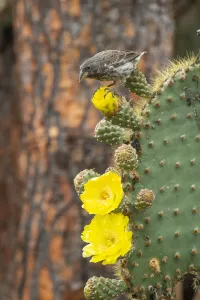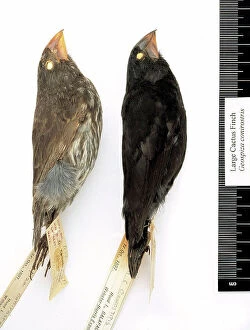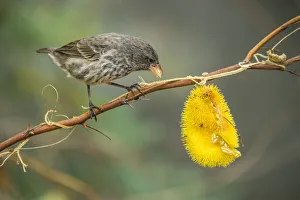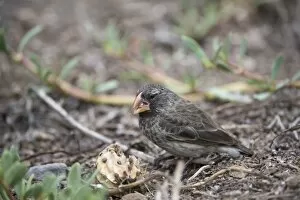Cactus Finch Collection
The cactus finch, scientifically known as Geospiza scandens or Geospiza conirostris, is a fascinating bird species found in the Galapagos Islands
All Professionally Made to Order for Quick Shipping
The cactus finch, scientifically known as Geospiza scandens or Geospiza conirostris, is a fascinating bird species found in the Galapagos Islands. Also referred to as the large cactus finch or Darwin's cactus finch, this remarkable creature has adapted its diet to survive in harsh environments. One captivating image shows a Darwin's cactus finch perched on an Opuntia cactus flower, delicately extracting nectar with its slender beak. Another snapshot captures a Cactus finch feasting on gourd fruit at Black Beach on Floreana Island. These resourceful birds have also been spotted savoring the vibrant Erythrina flowers in the Galapagos. In one photograph, we witness a Cactus finch bravely devouring prickly pear despite its thorny exterior. The resilience of these birds is truly awe-inspiring. Whether it's feeding on fruits or flowers, they have mastered survival techniques unique to their environment. The common cactus finch, another name for Geospiza scandens, can be seen in several images showcasing their feeding habits and interactions with other members of their species. Their ability to adapt and thrive amidst challenging conditions is evident through these snapshots. These captivating photographs offer glimpses into the world of the cactus finches - resilient creatures that have evolved alongside their surroundings. From nourishing themselves with various plant sources to displaying social behaviors within their communities, these birds exemplify nature's ingenuity and beauty.










